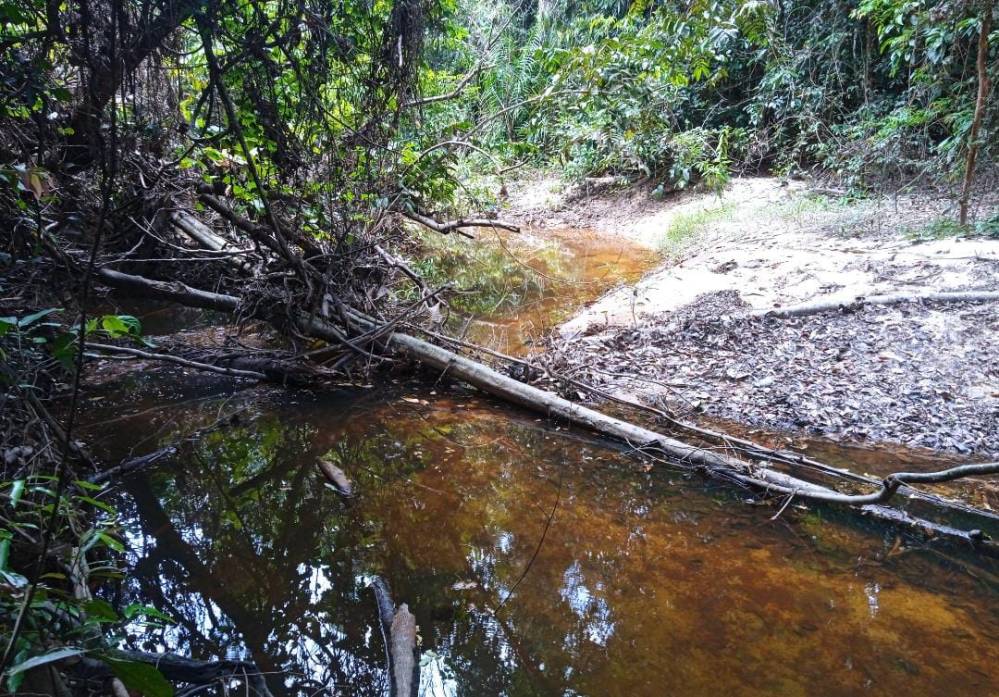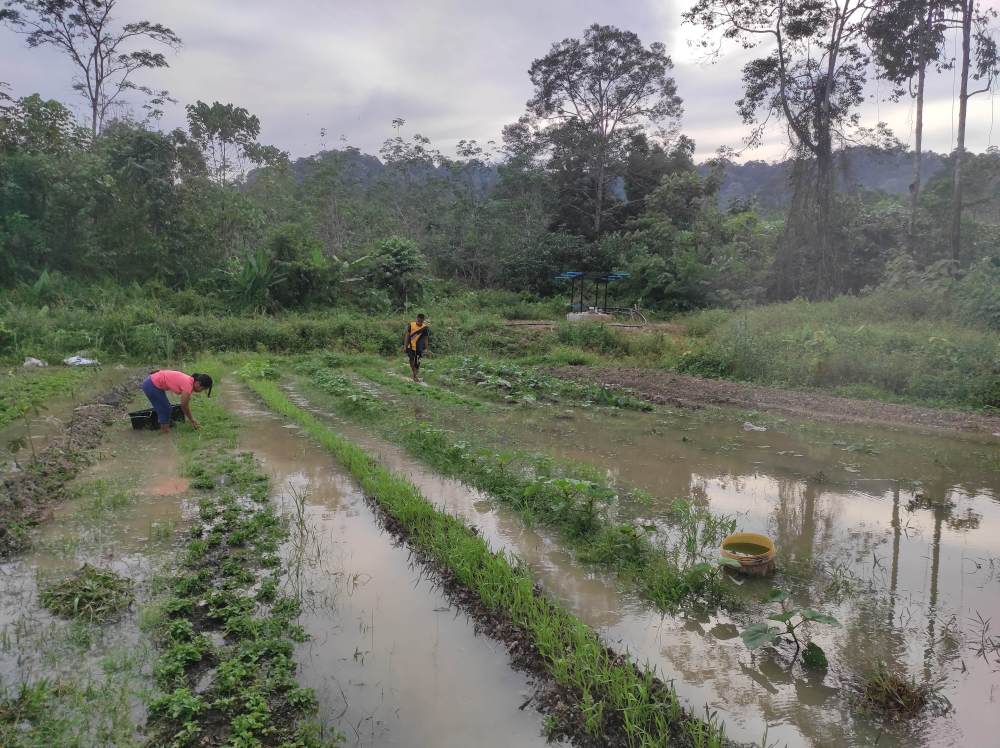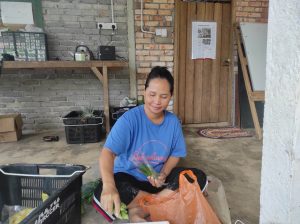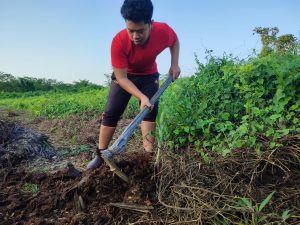Contrary to its name, watersheds or water catchments do not only concern water sources and supply. It is an interconnected system that includes water, land, air, plants, animals and the community it serves.
In simpler terms, rain, and groundwater in an area of land bound by hills or ridges will flow into a common point either a river, lake or ocean. In Malaysia, 97% of our water comes from rivers, and the river basin is one part of this broad watershed system [1].
Imagine a sponge – a healthy watershed and the lush forests around work together to soak up rainfall and host groundwater effectively.
A well-maintained watershed ensures access to good quality water sources for those dependent on it for daily activities such as drinking, cooking and agriculture. However, the delicate equilibrium and balance within these watersheds mean that any alterations upstream or downstream can endanger the communities relying on them.

In 2019, a tragic incident of water contamination in the Batek tribe settlement in Gua Musang raised concerns. This led a local NGO to advocate for water quality assessments in nearly 853 Orang Asli villages across Malaysia.
A study on the quality of water resources should be made at least once every six months because many Orang Asli villages depend on water sources from the forest. Logging and mining activities in the forest have contaminated the water.– Tijah Yok Chopil, chairman of Peninsular Malaysia Orang Asli Villages Network (JKOASM)[2]
No reports have emerged to date, leaving Orang Asli struggling with the consequences of uncertain water quality. The significance of watersheds to the community cannot be overstated, as these natural systems profoundly influence livelihoods, health, and daily living. Here are three significant reasons why watersheds are important to OA communities:
#1: Contaminated Waters Result In Sick Fish And Poor Food

For centuries, the OA community thrived by foraging on the forest floor, fishing, and cultivating their own crops. In those days, they could proudly claim that their drinking water was pristine and readily available from the nearby river. However, in 2011, a shift began with the onset of mining and logging activities that started to harm the surrounding lands and watersheds.
Due to mining work, water has become polluted. Getting clean drinking water has also become difficult. In the olden days, it was easily accessible. Those days we could just scoop the water and drink it. The river water was clear and pristine. – Seliah, Melai villager
The adverse effects of soil erosion caused debris to enter the river, leading to a decline in the health of the fish that once freely roamed these waters for generations.
Even the fish in Lake Chini have become ill. Their scales have turned into scabies. We don’t even dare to eat the fish. – Maimun, Melai villager
Once abundant with a variety of fruits and prized resin (damar), the forest that the community once cherished as a source of sustenance and pride is now nothing more than a memory confined to history.
When I was little, life was luxurious. I would search for rattan and gather resin (damar). – Seliah, villager
#2: Shifting Weather Causing Floods And Lost Of Crops
Watersheds helped by forests, especially in upper catchment areas (hills, mountains) can influence cloud formation and rainfall patterns. Of late, the community has been facing unbearable heat and unprecedented rainfall.
Compared to 20 years ago, the heat is very different now. The heat from the sun wasn’t as intense as it is now. Previously, we could still enjoy the crisp air after the rain. However, the effect of ground heat is now different because the temperature is higher.– Rohani, Melai villager
Pak Abas, one of the elders in Melai shared that pouring rain in the late evening is frequent these days.
Rain is more frequent and heavier in the late evening. – Pak Abas, Melai villager
The watershed and the forest work together to absorb rainwater and release it slowly – this reduces flood risks. However, without the stronghold of the tree roots, the grounds are looser which leads to a higher risk of flooding. Forest clearing to allow for the construction of a dam, as shown in OA settlements in Chini, is one of its perpetrators.
There’s a dam construction in Kuala Chini and the drains are clogged with rubbish thrown by irresponsible individuals. – Linggi, 65
With weather changes, community livelihoods are affected. Pak Abas finds it difficult to tap rubber in the morning.
The frequent rain in the evening makes it difficult to rubber tap the following day. – Pak Abas, Melai villager
And frequent floods mean more damage to community crops.

When floods occur, the Orang Asli are unable to do their daily activities and jobs such as tapping rubber, farming, and searching for food in the forest. Farmers are upset because their crops are affected by flood waters.– Linggi, 65
#3: Unreliable Water Supply Interrupts Daily Living
Our watershed is in the forest. It is crucial to preserve the forest so that the watershed remains clean for our daily use and source of food. If our watershed is contaminated, we won’t be able to catch fish or have water to drink and bathe in. – Seliah, Melai villager
With the watershed in neighbouring villages contaminated by mining and logging activities, they could no longer rely on the once pristine running water. Bathing in the river would mean itchy skin, and clothes could no longer be washed in the river.

Due to mining work, water has become polluted. Getting clean drinking water has also become difficult. – Seliah, Melai villager
For now, the OA community relies on scarce water resources available through gravity-fed water and groundwater from a tube well.
Even though there is no reliable water supply in our village compared to other villages, our life still goes on. We use what we have, such as our natural resources.
Watersheds are essential and play a significant role in OA communities nationwide. It is more crucial than ever to safeguard and manage watersheds with the community as a stakeholder. This will ensure harmonious coexistence between humanity and nature.
SOURCES:
- D.Matthew & N.Ismail. (2023). Much ado about Malaysia’s water woes. The Star. Link
- Malay Mail. (2019). Study quality of water resources at Orang Asli settlements, says JKOASM.Link


